
by Carolyn Gramling Tuesday, June 14, 2016
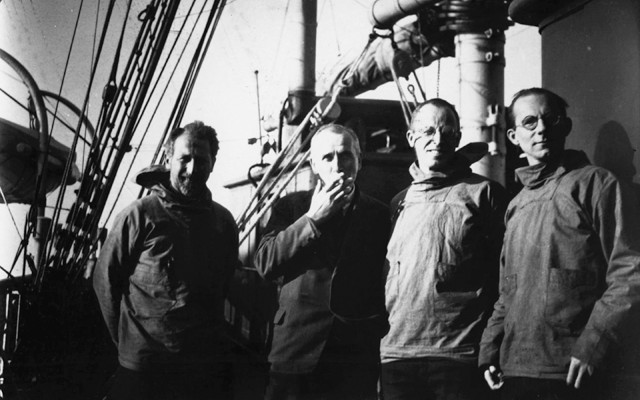
Members of the 1930 expedition, left to right: Johannes Georgi, Alfred Wegener, Fritz Loewe, Ernst Sorge. Credit: Archive of Alfred Wegener Institute.
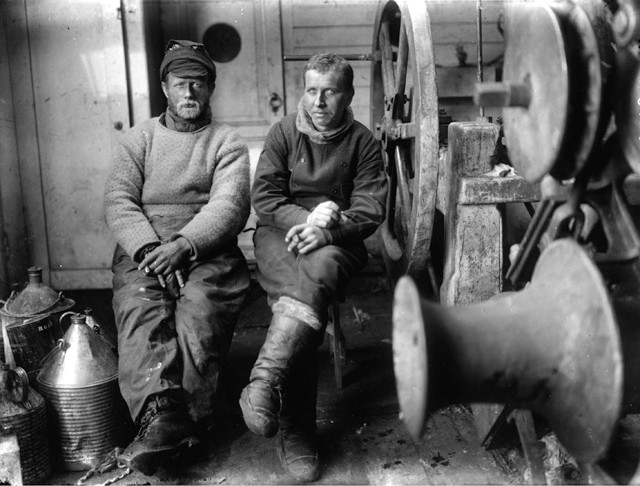
Alfred Wegener (right) during the 1930 expedition and overwintering in Greenland. Credit: Archive of Alfred Wegener Institute.
In September 1930, 15 polar explorers set out from their base camp at Kamarujuk on the west coast of Greenland. The team was carrying much-needed supplies 400 kilometers inland to two meteorologists waiting at a satellite camp at Eismitte at the center of the Greenland icecap. The team, consisting of German meteorologists Alfred Wegener and Fritz Loewe as well as 13 Greenlanders, traveled slowly, their dogsleds hindered by storms and frigid temperatures. All but Wegener, Loewe and one Greenlander, Rasmus Villumsen, were forced to turn back by the blizzards. At last, the three explorers managed to reach the icecap camp at the end of October.
Loewe, they discovered on arrival, would have to stay at Eismitte through the winter: He was suffering from frostbite so severe his toes would have to be cut off. But the camp did not have enough supplies for all five men to last the winter, so in early November, Wegener and Rasmus headed back to the base camp on the coast.
They never made it.
Alfred Wegener, born in 1880 in Berlin, Germany, was a meteorologist and polar explorer, but is most famous as the author of the continental drift hypothesis, a controversial idea that became the basis for the groundbreaking theory of plate tectonics. Although he had formally studied astronomy, Wegener soon became more interested in the science of weather and studying the upper atmosphere. He was also a hot air balloonist, breaking a world endurance record in 1906 for the longest hot air balloon flight, at more than 52 hours.
His experience with hot air ballooning, and with using weather balloons to track air masses, earned him a place on his first polar expedition, a 1906 Danish-led trip to the northeast coast of Greenland, where he studied the polar atmosphere with weather balloons and kites. Wegener ultimately traveled to the Arctic on four expeditions: in 1906-1908, 1912-1913, 1929 and 1930. In 1912, Wegener was part of a four-man expedition to the northeast coast of Greenland. While the team was climbing a glacier, the glacier began to calve, and the four men barely survived. But his trip was scientifically successful; forced to overwinter on the icecap, he collected enough data on the meteorology and glaciology of Greenland to publish several volumes.
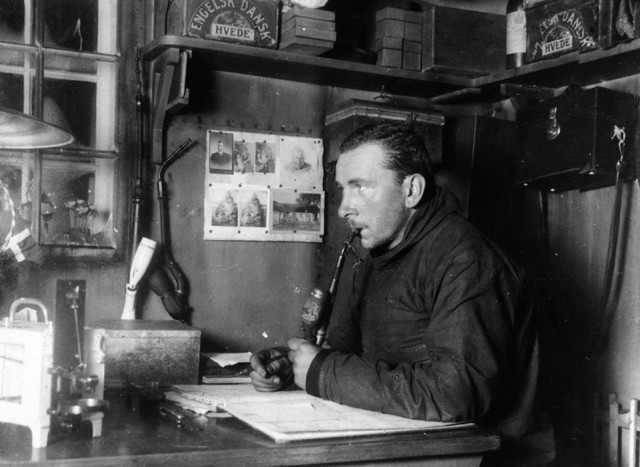
Alfred Wegener, during the winter of 1912-1913 in Greenland. Credit: Bildarchiv Preussischer Kulturbesitz, Berlin, Germany.
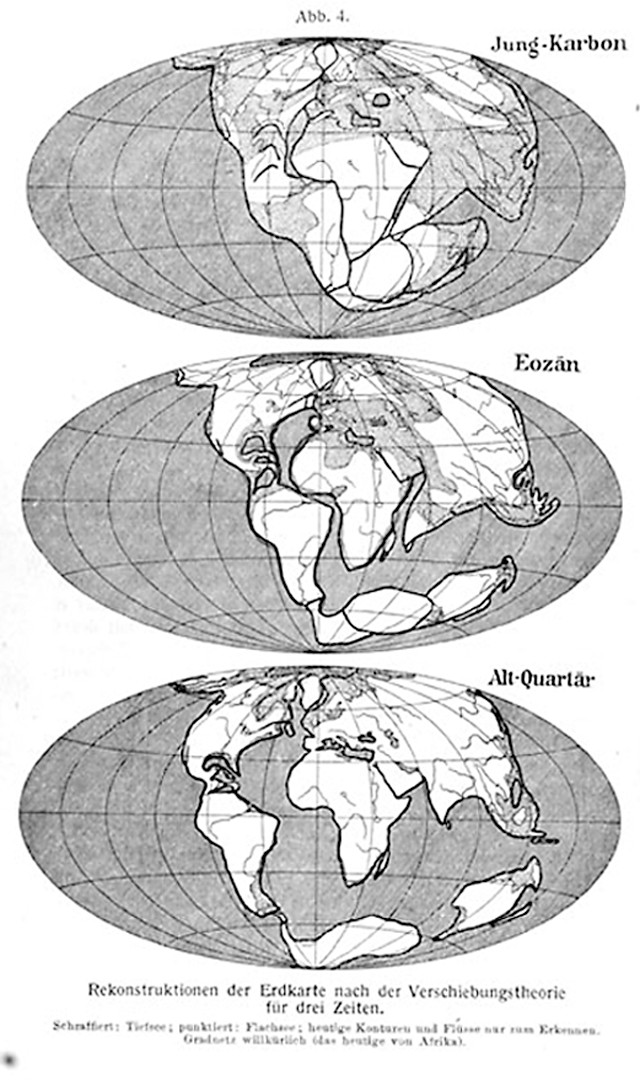
A map from the 1922 edition of Wegener's book "The Origin of Continents and Oceans." The map depicts continental drift during the Late Carboniferous, th Eocene and the Early Quaternary. Credit: "The Origin of Continents and Oceans," 3rd edition, Dover Publications.
Between his trips to the Arctic, Wegener was pursuing another field of interest. The curious coincidence of the matching coastlines of eastern South America and western Africa intrigued him. The prevailing wisdom at the time was that identical fossils found in Africa and South America could be explained by a now-submerged land bridge that once connected the two continents.
But Wegener had other ideas. In December 1910, he wrote a letter to his future wife, Else Koppe: “Doesn’t the east coast of South America fit exactly against the west coast of Africa, as if they had once been joined?” he wrote. “This is an idea I’ll have to pursue.”
He began to discuss his ideas at meetings, including a January 1912 meeting of the Geological Association in Frankfurt, Germany, and continued his investigation between polar explorations, turning to German geologist Hans Cloos for help in understanding the geology.
In 1915, in the middle of the first World War, Wegener published “The Origin of Continents and Oceans” in German. It went largely unnoticed. In 1922, a revised edition was published in multiple languages, including English, and suddenly, Wegener was at the center of one of the most important debates in the history of geology.
Wegener’s central hypothesis was that, rather than being linked across oceans by land bridges, the continents had instead fit together at one time like pieces of a jigsaw puzzle, forming a giant supercontinent that he called Pangaea. Over time, the continents had drifted apart physically, the more buoyant continents floating like icebergs on a sea of basalt.
The relative buoyancy of continental rocks, in fact, was one line of evidence against the idea that a sunken land bridge had once connected Africa and South America. Wegener also listed now-familiar observations — the crumpling of mountain ranges and deep gashes in the seafloor — as representing the collisions or divisions of land masses. But the flaw in Wegener’s hypothesis — one that he acknowledged — was that he couldn’t come up with a convincing mechanism for the drifting. As a result, a majority of geologists at the time dismissed his ideas as “mere geopoetry.”
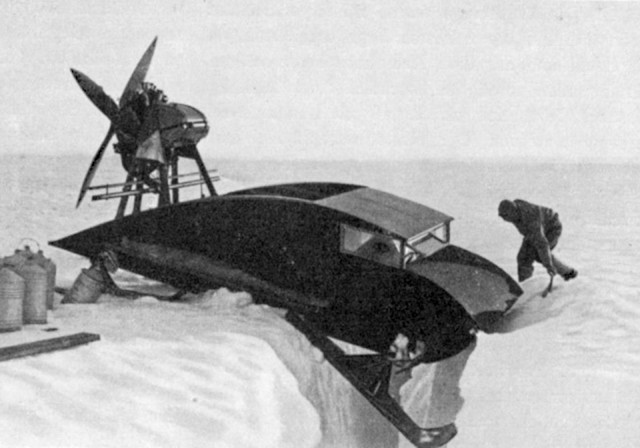
Photograph from the 1930 German expedition to Greenland. Credit: Archive of Alfred Wegener Institute.
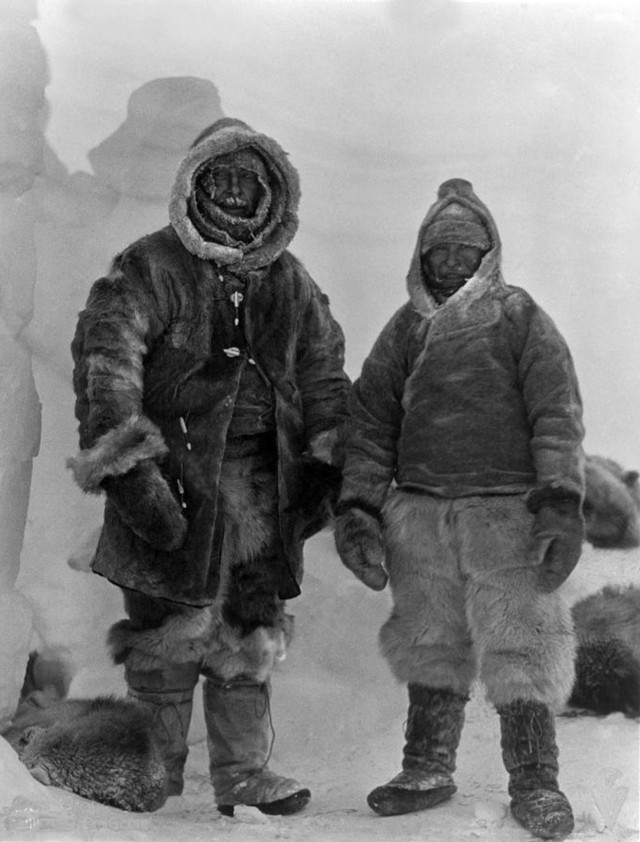
Alfred Wegener (left) and Rasmus Villumsen (right) at Eismitte station on Nov. 2, 1930. This is the last photo taken of either man. Credit: Archive of Alfred Wegener Institute.
In 1930, Wegener and a team of 21 explorers embarked on what would be Wegener’s last expedition, to study polar air circulation over Greenland’s icecap. The team arrived at western Greenland in mid- April, but the harbor was iced in, and they were forced to wait until mid-June to disembark. More delays followed: One team set out in July to establish the first of three planned camps on the icecap, at Eismitte, but bad weather prevented the main party from sending additional supplies to the camp. Finally, in September, fearing that the Eismitte camp would not survive without these supplies, Wegener, Loewe and Villumsen embarked on their fateful journey.
When the team did not return that winter, the expedition members remaining at base camp assumed Wegener’s group had decided to overwinter on the icecap. But the following spring, with still no sign of Wegener or the others, a search party set out across the ice. On May 12, 1931, several hundred kilometers inland, the party came upon a strange sight: a pair of skis standing upright, a human marker in the vast icy wilderness. Digging deeper in the snow, they discovered the body of Alfred Wegener, sewn into two blankets like a sleeping bag and covered with fur coats (he may have died of heart failure through overexertion, although the cause of death was never determined). Villumsen, it was assumed, had buried Wegener and left the skis to mark the place. The team continued to search for Villumsen, finding traces of his passage for another few dozen kilometers — tent pegs in the snow, the remains of a dog camp — but he was never found.
Accounts by surviving members of the expedition, including Loewe and meteorologist Johannes Georgi, one of the two members of the Eismitte camp, described what they knew of these events. But questions lingered; Wegener’s widow appeared to blame Georgi for poor planning decisions related to the supply delivery that ultimately led to her husband’s death. Stung, Georgi wrote to the sponsors of the expedition, the Emergency Committee for German Research, asking them to look into the case — in particular, to answer the question of whether that fatal trip to Eismitte had in fact been unnecessary and the result of poor planning. The committee ultimately cleared Georgi, but he remained troubled by the experience for years.
Wegener, too, was ultimately vindicated, but only many years later. His hypothesis of continental drift remained controversial for decades, until, in the 1960s, new paleomagnetic evidence of seafloor spreading emerged — and became the basis for the theory of plate tectonics.
© 2008-2021. All rights reserved. Any copying, redistribution or retransmission of any of the contents of this service without the expressed written permission of the American Geosciences Institute is expressly prohibited. Click here for all copyright requests.